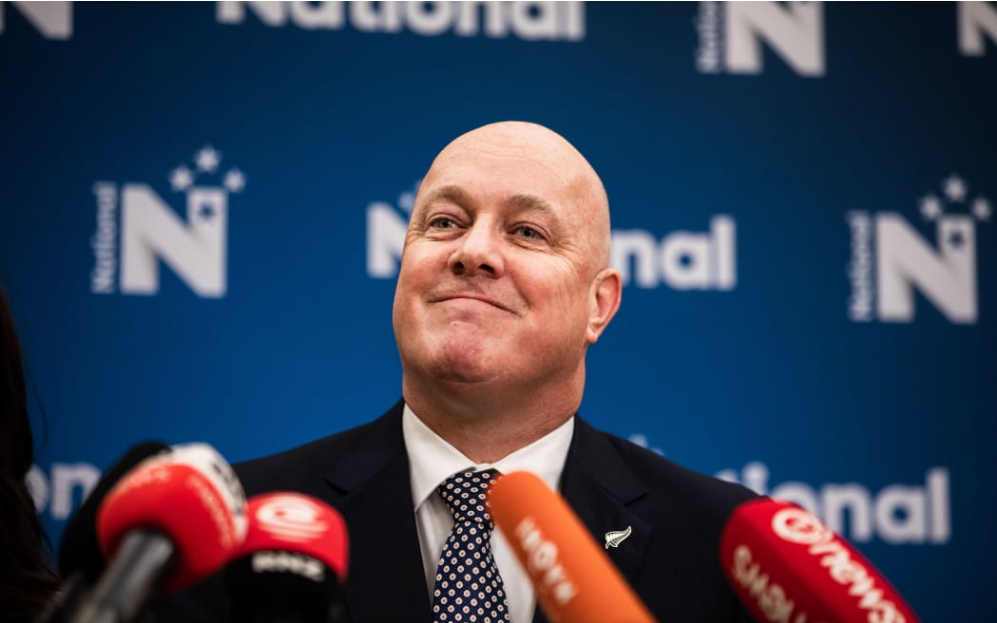
Labour’s support fell one point to 29 percent. The figures come from Talbot-Mills’ poll for corporate clients. Talbot-Mills runs a separate internal poll for the Labour Party.
The Greens were steady on 12 points, while Act fell one point to 7 percent.
NZ First was on 6.2 percent, Te Pāti Māori polled 4.9 percent, and Top polled 1.4 percent.
The poll was taken between February 1 and February 10 and included the period around Waitangi Day, where the government’s approach to the Treaty of Waitangi was front and centre. It follows a recent Taxpayers’ Union-Curia poll that had Act far higher, at 13.7 percent, and the Greens lower on 9 percent.
National leader Christopher Luxon was ahead as preferred prime minister at 27 percent, no change from the previous month. Labour leader Chris Hipkins was down three points to 23 percent.
A commentary released with the poll noted the national mood seems to be shifting in favour of the new government.
The right track/wrong track metric showed 43 percent of people thought the country was on the right track, compared with 41 percent of people who thought the country was on the wrong track. It is the first time the poll has recorded a net positive “right track” performance since June 2022.
Right track/wrong track is a key leading indicator of political fortunes for a government. If the country feels positively about its direction, it is likely to be supportive of the parties that govern it.
The poll commentary noted the change in mood since September 2023, the last weeks of the former government, when 35 percent of people polled said the country was on the right track, compared with 59 percent who said it was on the wrong track.
Another key indicator remained negative for the government. Twenty-five percent of people rated the economy as “excellent or good”, compared with 73 percent who rated it as “not so good” or “poor”.












